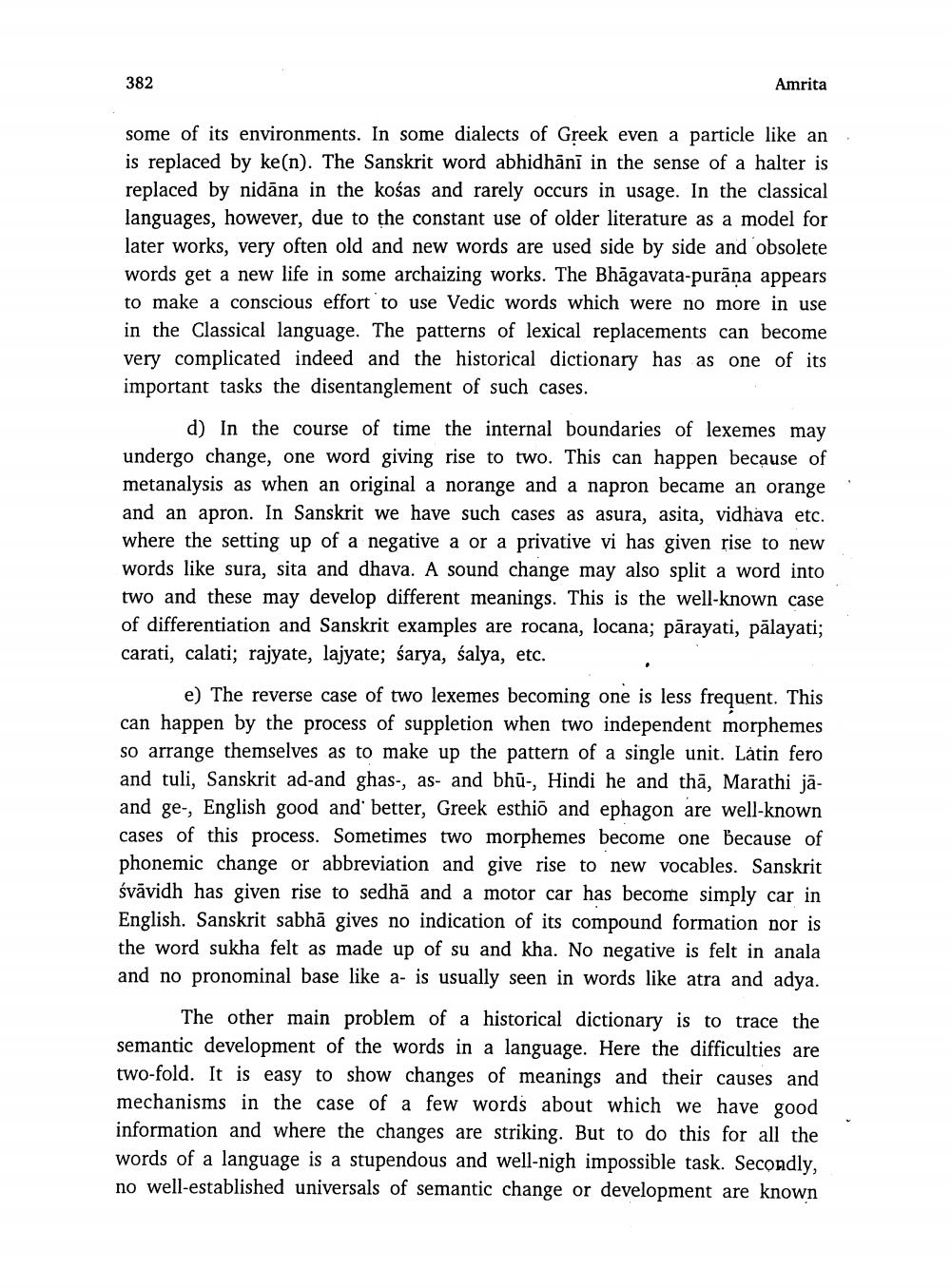________________
382
Amrita
some of its environments. In some dialects of Greek even a particle like an is replaced by ke(n). The Sanskrit word abhidhānī in the sense of a halter is replaced by nidāna in the kośas and rarely occurs in usage. In the classical languages, however, due to the constant use of older literature as a model for later works, very often old and new words are used side by side and obsolete words get a new life in some archaizing works. The Bhāgavata-purāna appears to make a conscious effort to use Vedic words which were no more in use in the Classical language. The patterns of lexical replacements can become very complicated indeed and the historical dictionary has as one of its important tasks the disentanglement of such cases.
d) In the course of time the internal boundaries of lexemes may undergo change, one word giving rise to two. This can happen because of metanalysis as when an original a norange and a napron became an orange and an apron. In Sanskrit we have such cases as asura, asita, vidhava etc. where the setting up of a negative a or a privative vi has given rise to new words like sura, sita and dhava. A sound change may also split a word into two and these may develop different meanings. This is the well-known case of differentiation and Sanskrit examples are rocana, locana; pārayati, pālayati; carati, calati; rajyate, lajyate; śarya, śalya, etc.
e) The reverse case of two lexemes becoming one is less frequent. This can happen by the process of suppletion when two independent morphemes so arrange themselves as to make up the pattern of a single unit. Látin fero and tuli, Sanskrit ad-and ghas-, as- and bhū-, Hindi he and thā, Marathi jāand ge-, English good and better, Greek esthio and ephagon are well-known cases of this process. Sometimes two morphemes become one because of phonemic change or abbreviation and give rise to new vocables. Sanskrit śvāvidh has given rise to sedhā and a motor car has become simply car in English. Sanskrit sabhā gives no indication of its compound formation nor is the word sukha felt as made up of su and kha. No negative is felt in anala and no pronominal base like a- is usually seen in words like atra and adya.
The other main problem of a historical dictionary is to trace the semantic development of the words in a language. Here the difficulties are two-fold. It is easy to show changes of meanings and their causes and mechanisms in the case of a few words about which we have good information and where the changes are striking. But to do this for all the words of a language is a stupendous and well-nigh impossible task. Secondly, no well-established universals of semantic change or development are known




